The Definitive Guide to Strategic Logo Design and Brand Identity Systems
A logo is not merely a graphic; it is the most concentrated visual expression of a brand's promise, mission, and value proposition. True branding strategy is the deliberate, holistic management of every sensory touchpoint—visual, auditory, and verbal—to create a distinct, predictable, and emotionally resonant experience. In the modern, hyper-competitive digital landscape, a successful identity system is one that is both memorable and technically resilient across all media.
10/2/20255 min read


1. The Strategic Foundation: Brand Architecture and Persona
Before a single pixel is placed, the strategic pillars of the brand must be defined, as they provide the immutable criteria for all design decisions.
1.1. Defining the Core Brand Pillars
Effective branding begins with the synthesis of four core pillars, which act as the North Star for the entire identity system:
Mission: Why the brand exists (its purpose beyond profit).
Vision: Where the brand is going (its future state and impact).
Values: How the brand operates (its behavioral code and ethics).
Persona/Archetype: Who the brand is (its voice, tone, and character, often mapped to established psychological archetypes like the Ruler, the Rebel, or the Innocent).
The resulting Brand Promise must be unique, relevant to the target audience, and credible, serving as the benchmark against which the final logo and visual system are evaluated.
1.2. Brand Architecture and Scalability
A robust identity system must account for the brand's current structure and future growth—a concept known as Brand Architecture:
Monolithic (Branded House): A single master brand dominates, with all sub-products or services using the same core identity (e.g., FedEx, where all divisions use the core name and logo).
Pluralistic (House of Brands): Individual products or services are heavily promoted with unique identities, separate from the parent company (e.g., Procter & Gamble's multiple distinct cleaning product lines).
Endorsed: Sub-brands have their own identity but are visibly endorsed by the parent company, lending credibility (e.g., Courtyard by Marriott).
The chosen architecture dictates the modularity and flexibility required in the logo system (e.g., whether the logo needs room for sub-brand lockups).
2. Logo Design Principles: Form, Function, and Semiotics
A strong logo is characterized by five key design principles: Simplicity, Memorability, Timelessness, Versatility, and Appropriateness. The selection of the logo type is a strategic choice tied to brand maturity and market positioning.
2.1. The Taxonomy of Logo Marks
A successful brand identity utilizes a complete logo system, incorporating several variations of the core mark:
Wordmarks (Logotypes): Focus solely on the company name through typography (e.g., Google, CNN). The design relies heavily on bespoke type design and visual weight.
Lettermarks (Monograms): Shortened brand name, usually initials (e.g., IBM,NASA). Ideal for long names and when instant recognition is already established.
Brandmarks (Symbols/Pictorial Marks): A graphical, abstract, or pictorial symbol without text (e.g., Apple's apple, Nike's swoosh). Requires significant marketing investment to establish meaning.
Emblems: The text and symbol are inseparable, locked within a shape (e.g., Starbucks, Harley-Davidson). Often convey heritage or tradition.
Combinations Marks: The standard mark, combining a symbol and a wordmark (e.g., McDonald's golden arches and name). Offers the fastest path to recognition.
2.2. Semiotics and Visual Weight
The effectiveness of a logo is rooted in semiotics (the study of signs and symbols). Every element—shape, line, and direction—carries unconscious meaning:
Verticality and Sharp Angles often convey stability, power, and aggression.
Horizontal Lines and Curves suggest fluidity, community, and comfort.
Upward Movement (e.g., a diagonal line moving right) conveys growth and futurism.
Designers must control the visual weight—the perceived lightness or heaviness of the elements—to ensure balance and hierarchical clarity, ensuring the mark is recognizable when scaled to the size of an app icon or billboard.
3. Technical Specifications: Versatility and Scalability
In a multi-channel digital environment, the brand mark must be technically resilient. This mandates a vector-first, systematic approach to file generation.
3.1. Vector Mastery and Resolution Independence
The primary logo asset must be created as a vector graphic (typically using .AI or .SVG formats).
Resolution Independence: Vector graphics are defined by mathematical paths and points, not pixels, making them resolution independent. This ensures the logo can be scaled infinitely—from a tiny favicon to the side of a building—without any loss of fidelity or pixelation, a non-negotiable requirement for modern digital and print production.
File Hierarchy: The final Logo Package must include print-ready files (.EPS,.PDF) and web-optimized, rasterized formats (.PNG with transparent backgrounds, .JPEG) for all applications.
3.2. Color Systems and Technical Output
Color consistency is the most critical technical challenge. The Brand Color Palette must be precisely defined across different color models:
Pantone (PMS - Pantone Matching System): Used for print production requiring exact, consistent, pre-mixed ink colors (e.g., packaging, offset printing). This defines the brand’s true color.
CMYK (Cyan, Magenta, Yellow, Key/Black): The four-color process used for commercial printing where the colors are mixed on the press. This is the official print conversion of the Pantone color.
RGB (Red, Green, Blue): The additive color model used for all screen-based digital media (websites, apps, video).
HEX Codes: The six-digit alphanumeric code used specifically for web development (e.g., CSS, HTML) to ensure on-screen consistency.
The brand guidelines must explicitly define the fail-safes: full-color, single-color (black), and reverse-color (white) versions of the logo for placement on any background.
4. The Complete Identity System: Typography and Imagery
The logo is merely the centerpiece of a larger, interconnected system that includes every other visual element.
4.1. The Typeface Hierarchy
Typography is the "voice" of the brand. The identity system must define a precise Typeface Hierarchy that dictates usage across all communications:
Primary Typeface: Used for the logo, headlines, and key promotional materials. This font strongly carries the brand's personality.
Secondary Typeface: A complementary font used for body copy, user interface (UI) text, and long-form content, prioritizing readability and accessibility.
Technical Specifications: Guidelines must specify font weights, sizes, leading (line height), tracking (letter spacing), and the proper use of capitalization to maintain a consistent voice.
4.2. Visual Language and Imagery
The system extends to the specific style and subject matter of photography, illustration, and iconography:
Imagery Style: Define parameters like color treatment (e.g., high contrast, muted, monochromatic), composition (e.g., candid, posed, minimal), and subject focus (e.g., people-focused, product-focused). This ensures every image reinforces the brand persona.
Iconography: The use of simple, consistent visual cues for digital interfaces and informational graphics. These elements must adhere to the visual language of the logo and support the overall UI/UX of the platform.
5. Brand Governance: The Style Guide and Maintenance
A successful brand identity is governed by rigorous, accessible documentation that ensures consistency across every internal and external partner.
5.1. The Brand Style Guide (Brand Book)
The Brand Style Guide is the single source of truth, codifying all elements of the identity system. It must include detailed sections on:
Brand Narrative: Mission, vision, audience profile, and tone of voice.
Logo Usage: Specifications for minimum size, clear space (the protected area around the logo), placement rules, and examples of misuse (e.g., stretching, color manipulation).
Color & Typography: Pantone,CMYK,RGB,HEX codes for all primary and secondary colors, and the defined typeface hierarchy.
Voice and Tone: Guidelines for written communication, from formal headlines to informal social media responses.
5.2. Digital Asset Management and System Maintenance
Maintaining a cohesive brand requires a central Digital Asset Management (DAM) system where all up-to-date, approved logo files, templates, and style guides are stored. The branding strategy must include an audit cycle (typically annual) to assess the identity’s performance, technical relevancy, and market standing, ensuring the brand evolves strategically without losing its core recognition. This disciplined approach is the ultimate determinant of a brand's longevity and equity.
Get in a free Consultation Today!
We are here to give you the perfect solution for your business at unmatchable prices.


Join Our Newsletter
